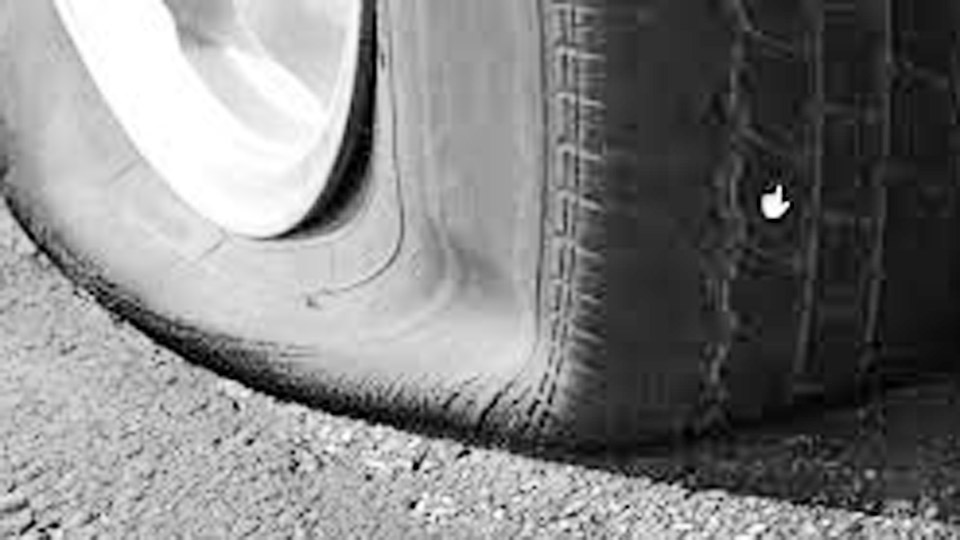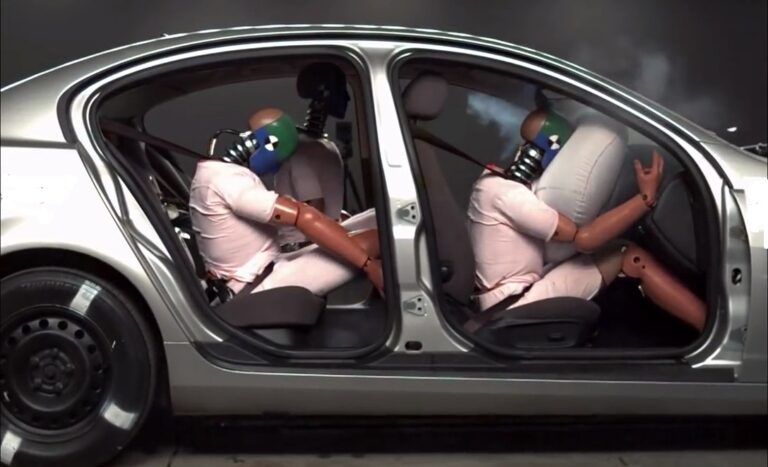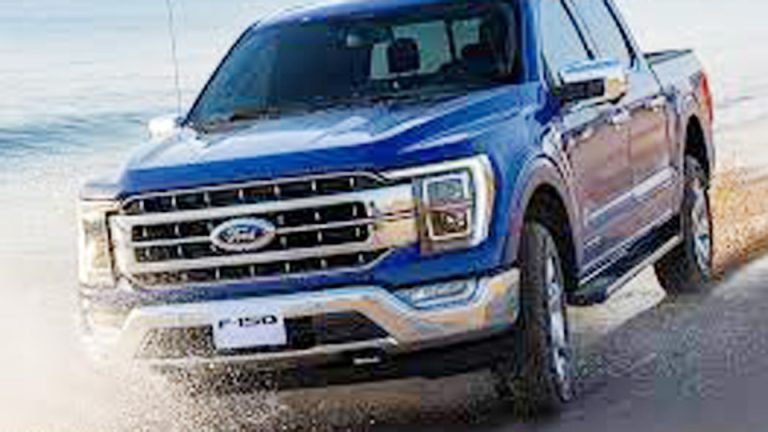When I first switched to nitrogen-filled tires, I was excited by all the promised benefits—more stable pressure, better fuel efficiency, and longer tire life. And honestly, for a while, it felt like a smart upgrade. But as time went on, I started to notice some drawbacks that no one really talks about.
From the hassle of finding a nitrogen refill station to the extra cost and limited convenience, I realized nitrogen isn’t always the perfect solution it’s hyped up to be.
Through my own experience, I’ve come to see both sides of the story. While nitrogen does have its advantages, it also comes with a few notable disadvantages that can be frustrating for everyday drivers like you and me. I’ll break down the real-world downsides of nitrogen-filled tires so you can decide if it’s truly worth it—or just an unnecessary extra.

Photo by fuelandtiresaver
Nitrogen-Filled Tires
Before we get into the drawbacks, let’s cover what nitrogen-filled tires are. Regular air is about 78% nitrogen, 21% oxygen, and a mix of other gases with some water vapor. Nitrogen tire inflation uses nearly pure nitrogen—around 93-99%—to fill your tires.
The idea is that nitrogen leaks slower and stays drier than air, offering benefits like consistent pressure. I tried it on my Civic when a shop offered it with new tires, and while it had perks, I ran into some issues that made me question its value. Knowing these downsides helps you make an informed choice.
Science Behind Nitrogen
Nitrogen’s benefits come from its properties: larger molecules leak slower through tire rubber, and it’s drier than air, reducing moisture-related issues like pressure swings or wheel corrosion. I noticed my nitrogen-filled Civic’s tires held pressure better than my air-filled F-150’s in cold weather.
But the science also hints at limitations—nitrogen isn’t a magic fix, and its drawbacks can outweigh the benefits in some cases. Let’s break down what I’ve seen go wrong with nitrogen-filled tires.
Key Disadvantages of Nitrogen-Filled Tires
After using nitrogen in my cars and trucks, I’ve hit some roadblocks. Here’s what I’ve learned about the disadvantages of nitrogen-filled tires, based on real experience:
Higher Cost
The biggest downside is the price. Nitrogen fills cost $5-$20 per tire, depending on the shop, while regular air is free or $1-$2 at a gas station. I paid $30 to fill my Civic’s four tires with nitrogen, which stung compared to free air for my F-150.
Refills aren’t cheap either—$3-$10 per tire if pressure drops. For budget-conscious drivers like me with my old Dodge Ram, that extra cost adds up, especially if you’re maintaining multiple vehicles.
Limited Availability
Nitrogen isn’t as easy to find as air. Not every shop offers it, and gas stations don’t have nitrogen pumps. When I took my Wrangler on a road trip, I had a slow leak and couldn’t find a nitrogen fill in a small town—ended up using air, which diluted the benefits.
My F-150’s nitrogen tires were a hassle to top off away from my regular shop. Air’s everywhere, making it more convenient for quick fixes.
Mixing with Air Reduces Benefits
If you can’t find a nitrogen fill, topping off with air is common, but it undermines nitrogen’s advantages. The moisture and oxygen in air bring back the pressure swings and corrosion risks you’re trying to avoid.
I made this mistake with my Civic—used an air pump in a pinch, and the tires started losing pressure faster, like my air-filled Ram. Keeping nitrogen pure is tough unless you’re near a shop with a generator.
Minimal Performance Gains for Casual Drivers
Nitrogen’s benefits—like stable pressure and better fuel economy—are most noticeable for frequent drivers or heavy-duty use. For casual drivers, like my neighbor with his Camry, the difference is small.
I used nitrogen in my Accord and saw maybe 1 mpg better fuel economy, but my air-filled Ram performed fine for short trips. If you’re not towing or driving long distances, nitrogen’s perks might not justify the cost.
Maintenance Still Required
Nitrogen doesn’t eliminate tire maintenance. You still need to check pressure monthly, inspect for damage, and rotate tires. I thought nitrogen would mean less work for my F-150, but I still checked pressure regularly—leaks happen, even with nitrogen.
My Wrangler had a puncture that nitrogen couldn’t fix; I still needed a patch. Nitrogen’s not a set-it-and-forget-it solution, which disappointed me at first.
Overhyped Benefits
Some shops make nitrogen sound like a miracle cure, but it’s not. It won’t transform your car’s performance or fix bad tires. My friend’s Mustang used nitrogen, and he expected race-car handling, but the difference was subtle—mostly better pressure stability.
My Ram’s air-filled tires performed just fine for its age and use. The hype can lead to unrealistic expectations, making nitrogen feel like a letdown.
Potential for Overcharging
Some shops charge a premium for nitrogen, banking on its “high-tech” appeal. I got quoted $20 per tire at one place for my Camry, which was way more than the $7 per tire I paid elsewhere. You have to shop around to avoid getting ripped off. Air, being free or cheap, never has this issue. I’ve learned to ask for deals or check if nitrogen’s included with new tires.
Nitrogen vs Air: A Comparison Table
To weigh nitrogen in car tires vs air, here’s a table based on my experience:
| Feature | Nitrogen | Regular Air |
|---|---|---|
| Cost | $5-$20 per tire | Free or $1-$2 |
| Availability | Limited to shops | Widely available |
| Pressure Stability | High (leaks slower) | Moderate (leaks faster) |
| Moisture Content | Dry (no water vapor) | Contains moisture |
| Wheel Corrosion | Minimal | Can cause rust |
| Maintenance | Still required | More frequent checks |
| Best For | Frequent drivers, towing | Casual drivers, budget cars |
This table helped me decide when nitrogen was worth it (my F-150 for towing) and when air was fine (my Ram for short drives).
My Real-World Experience with Nitrogen
Let me share a couple of stories to show nitrogen’s downsides. When I got new tires for my Honda Civic, the shop offered nitrogen for $7 per tire. I went for it, expecting less maintenance. The tires held pressure well—barely a 1-psi drop in winter—but when I got a slow leak on a road trip, no nearby shop had nitrogen. I topped off with air, and the tires started losing pressure faster, like my air-filled Ram. The hassle of finding nitrogen was a pain.
On my Ford F-150, I use nitrogen for towing, and it’s great for stability. But the $32 fill-up cost stung, and I still had to check pressure monthly. Compare that to my Dodge Ram, where I use free air and top off at any gas station. For my budget-conscious Ram, air’s convenience and cost won out, even if it meant more frequent checks.
Cost Breakdown: Nitrogen vs Air
Here’s what I’ve seen for costs:
| Item | Estimated Cost | Notes |
|---|---|---|
| Nitrogen Fill (per tire) | $5-$20 | Sometimes free with new tires |
| Nitrogen Refill | $3-$10 per tire | To maintain purity |
| Nitrogen Tank (DIY) | $200-$500 | For enthusiasts |
| Regular Air | Free-$2 | Gas station pumps |
| Professional Tire Service | $50-$150 | May include nitrogen |
I paid $28 for nitrogen in my Civic’s tires, which saved some hassle but wasn’t worth it for my Ram’s short drives.
Who Should Avoid Nitrogen?
Nitrogen’s not for everyone. Here’s when I stick with air:
- Budget Drivers: If you’re watching pennies, like me with my Ram, air’s free or cheap.
- Casual Drivers: Short trips, like my neighbor’s Camry, don’t need nitrogen’s benefits.
- Rural Areas: If nitrogen’s hard to find, air’s easier. My rural buddy uses air for his Chevy.
- Older Cars: Worn tires or wheels, like my Ram’s, don’t gain much from nitrogen.
Who Benefits from Nitrogen?
Despite the downsides, nitrogen has its place. Here’s who I think it suits:
- Frequent Drivers: If you log lots of miles, like my F-150 for work, nitrogen reduces pressure checks.
- Towing or Hauling: Stable pressure is key for heavy loads. My F-150’s towing trips were smoother with nitrogen.
- Extreme Climates: Nitrogen helps in hot or cold weather. My Wrangler’s tires stayed steady in desert heat.
- Luxury or Performance Cars: Nitrogen prevents corrosion on high-end wheels. My friend’s BMW benefited from it.
Maintaining Nitrogen-Filled Tires
Nitrogen doesn’t mean zero maintenance. Here’s how I keep mine in check:
- Check Pressure Monthly: Use a digital gauge. My Civic’s nitrogen tires rarely need topping off.
- Top Off with Nitrogen: Go to a shop to maintain purity. I learned this after using air on my F-150.
- Inspect for Damage: Nitrogen won’t fix punctures. My Wrangler needed a patch for a leak.
- Rotate Tires: Every 5,000-8,000 miles for even wear. I do this on all my cars.
Maintaining Air-Filled Tires
Air-filled tires need more attention:
- Check Pressure Weekly: Air leaks faster, especially in cold weather. I check my Ram’s tires often.
- Top Off Anywhere: Gas stations or portable pumps work. I keep a compressor for my Ram.
- Watch for Wear: Air-filled tires wear unevenly if pressure’s off. I caught this early on my Ram.
- Clean Wheels: Air’s moisture can cause rust. I clean my Ram’s rims regularly.
Common Myths About Nitrogen-Filled Tires
I’ve heard some misconceptions, so let’s clear them up:
Myth: Nitrogen Never Leaks: It leaks slower, but you still check pressure. My Civic’s tires lose a bit over time.
Myth: Nitrogen Fixes All Tire Issues: It won’t seal punctures or bad tires. My Wrangler still needed repairs.
Myth: Air and Nitrogen Can’t Mix: You can mix them, but it reduces benefits. I did this on my F-150 and saw more pressure loss.
Myth: Nitrogen’s Only for Fancy Cars: It’s useful for any car, but my Ram does fine with air.
Getting Nitrogen in Your Tires
If you want to try nitrogen, here’s how I do it:
- Find a Shop: Tire shops or dealerships offer nitrogen, often free with new tires. I got it for my Civic at a local shop.
- Check Purity: Ensure 93-99% pure nitrogen for best results. My F-150’s shop used 95% purity.
- Look for Green Caps: They mark nitrogen-filled tires. My Civic’s green caps make it easy to spot.
- Maintain with Nitrogen: Top off at a shop with nitrogen. I do this every few months for my Civic.
Nitrogen vs Air in Different Vehicles
Here’s how nitrogen and air performed in my vehicles:
| Vehicle | Nitrogen Experience | Air Experience |
|---|---|---|
| Honda Civic (2014) | Stable pressure, less maintenance | More top-offs, standard performance |
| Ford F-150 (2017) | Consistent towing, no corrosion | Frequent checks, some rust |
| Jeep Wrangler (2011) | Steady in heat, even wear | Pressure swings off-road |
| Dodge Ram (2005) | Costly, hard to maintain | Cheap, easy to top off |
Nitrogen was great for my Civic and F-150, but air suited my Ram’s budget needs.
What Not to Do with Nitrogen-Filled Tires
Here’s what I’ve learned to avoid:
- Don’t Mix with Air Freely: It dilutes nitrogen’s benefits. I did this on my F-150 and regretted it.
- Don’t Skip Checks: Nitrogen still requires pressure monitoring.
- Don’t Overpay: Shop around for fair nitrogen prices. I got a deal on my Civic.
- Don’t Expect Miracles: Nitrogen helps, but it’s not a cure-all.
Practical Tips for Choosing Nitrogen or Air
Here are my tips for picking the right option:
- Weigh Costs vs Benefits: Nitrogen’s great for heavy use, but air’s fine for casual driving.
- Check Local Availability: Ensure nitrogen refills are accessible. I confirmed this for my Civic.
- Use a Quality Gauge: Accurate pressure checks are key, nitrogen or air.
- Combine with Maintenance: Check tires during oil changes or rotations.
These tricks make tire care simple, whatever you choose.
Nitrogen or Air, Choose Wisely
So, what are the disadvantages of nitrogen-filled tires? From my experience with my Civic, F-150, and more, nitrogen’s downsides include higher costs, limited availability, the hassle of maintaining purity, minimal gains for casual drivers, and overhyped benefits.
Air’s free, widely available, and good enough for budget cars like my Ram, but it requires more frequent checks and can cause corrosion. Nitrogen shines for frequent drivers, towing, or extreme climates, but it’s not a must for everyone.
Weigh your driving habits, budget, and local options, and keep up with tire maintenance. Here’s to safe drives and tires that keep you rolling!
Read more on disadvantages of nitrogen-filled tires
Frequently Asked Questions
What are the disadvantages of nitrogen-filled tires?
Nitrogen costs more, is harder to find, loses benefits when mixed with air, offers minimal gains for casual drivers, and still requires maintenance.
Is nitrogen better than air for car tires?
Nitrogen offers stable pressure and less corrosion, great for towing or frequent driving. Air’s cheaper and easier to find, fine for casual use.
How much does it cost to fill tires with nitrogen vs air?
Nitrogen costs $5-$20 per tire, sometimes free with new tires. Air’s free or $1-$2 at pumps. I paid $28 for my Civic’s nitrogen.
Can I top off nitrogen-filled tires with air?
Yes, but it reduces nitrogen’s benefits by adding moisture and oxygen. I did this on my F-150 and saw more pressure loss.
Do nitrogen-filled tires need less maintenance?
No, you still check pressure monthly and inspect for damage. My Civic’s nitrogen tires still need regular monitoring.




